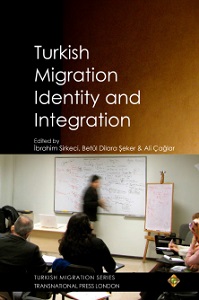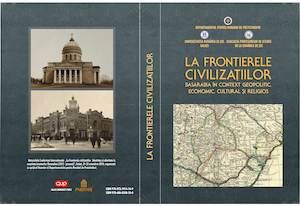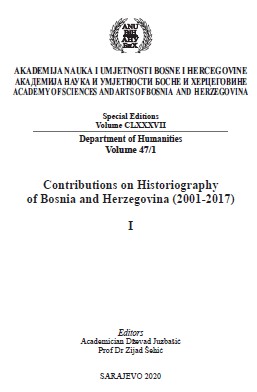
We kindly inform you that, as long as the subject affiliation of our 300.000+ articles is in progress, you might get unsufficient or no results on your third level or second level search. In this case, please broaden your search criteria.


În contextul discuţiilor aprinse din ultimul timp pe margi- nea legii privind acordarea cetăţeniei române basarabenilor şi bucovinenilor, mi-am pus întrebarea dacă cetăţenia ar putea fi un aspect al identităţii naţionale. În acelaşi timp am încercat să descopăr dacă în trecut a existat un alt moment de discuţii aprinse privind cetăţenia română a basarabenilor. Imediat după 23 august 1944 a existat un astfel de moment, în care soarta refugiaţilor din Basarabia şi Bucovina de Nord a depins de evoluţia discuţiilor în jurul articolului cinci al Convenţiei de Armistiţiu, privind cetăţenia acestor refugiaţi şi implicit a tuturor locuitorilor din teritoriile cedate în 1940.
More...
Studiul de faţă are ca obiect de cercetare mediul intelectual din Republica Sovietică Socialistă Moldovenească (RSSM) în perioada anilor '50 – '80 ai secolului al XX-lea, văzut ca parte componentă a mediului intelectual din sistemul sovietic. Obiectivul urmărit este axat pe sublinierea transformărilor identitare de tip etnic şi social ale intelectualităţii din RSSM prin prisma constituirii şi evoluţiei sistemului totalitar de tip comunist, cu scopul de a evidenţia schimbările care au intervenit în acest grup social.
More...
Identitatea naţională se formează în epoca naţionalismului, atunci când societăţile s-au organizat conform principiului naţional. Procesul a fost cu certitudine dirijat de autorităţi, după ce au luat naştere pe parcurs instituţiile naţionale. Din acel moment limbii şi culturii majorităţii, tradiţiilor şi istoriei naţionale li se acordă un loc central. Rezultatul final al unui proces reuşit de construcţie naţională este, printre altele, crearea identităţii naţionale.
More...
In the period of 2001–2017 Croatian Ottomanists (nine, but really seven more productive authors) had produced a fairly large number of innovative works dealing with Bosnia-Herzegovina, or, more precisely, the eyalet of Bosnia in the early modern period (roughly 1500–1800) which for a certain time was including about half of present-day Croatia. The parts of Croatia in the Adriatic hinterland were belonging to the Bosnian eyalet until the end of the 17th century, as well as western most part of the land between the Sava and Drava rivers, while the rest of that territory, that is, central and eastern Slavonia was attached to the new eyalet of Kanizsa in 1600, yet it had mostly remained under Bosnian control in financial matters. This was the reason why the history of the whole space was outlined as one and the same larger unit. A wide range of subjects featuring new methods, advanced and original was discussed, from social and economic issues, to religion and culture. The most interesting findings and achievements had been made in the matters of analyzing the intricacies of Ottoman taxation. It turned out that the tax assessment must not be apprehended at the first glance, but that the historian has to include the rather hardly visible practices on the ground, influenced by local realities, with a huge impact on the land regime, and even more so, on demographic estimations. Concerning the high rates of conversion to Islam, special attention was made to the hitherto neglected factor, that is, to the financial stimuli. It was found that, due to the specific situation of the economic position of the peasantry, in Bosnia, or its central parts together with northern Herzegovina, embracing Islam brought more substantial easements than in much of the rest in the Balkans. As for the military issues, ocaklık timars and autonomy fresh interpretations were also offered. To the history of towns, culture, relations between the eyalet and Dubrovnik and particularly ecohistorical subjects due respect was paid with remarkable success. Last but not least, the new reading of Evliya Çelebi’s travelogue had resulted in many new insights. Much of this work was performed in a manner like looking for a needle in a haystack, but in my opinion it was quite rewarding.
More...
Based on the analysis and evaluation of the characteristics of historical science in Bosnia and Herzegovina over the period considered, several important facts need to be pointed out. The aggression against Bosnia and Herzegovina in 1992 had profound consequences on the state of Bosnia and Herzegovina's historiography and in its neighbourhood, and as a consequence there is an increased interest in the past and in seeking answers to current events in the past. Historical sciences have largely become an instrument of current policies, so little attention is paid to critical analyses of historical sources and their objective evaluation and interpretation. New interpretations of historical processes, while removing credible facts, have greatly influenced the formation of new approaches to historiography. Historiographic works are valued differently in Bosnia and Herzegovina, although many facts have been known before, so it is impossible to give a singular assessment of Bosnia and Herzegovina's historiography which considers the period of Austro-Hungarian rule in Bosnia and Herzegovina. Detailed insight into the structure of published historiographical works in Bosnia and Herzegovina shows that the treatment of certain aspects of Bosnia and Herzegovina's past is dominated by discussions, articles and short stories of unequal quality and scientific scope, as well as the lack of extensive, scientifically based studies, which are a prerequisite for the creation of historiographic syntheses. Although significant results have been achieved in Bosnian-Herzegovinian historiography in the study of political, economic and cultural developments in Bosnia and Herzegovina during the Austro-Hungarian period, there are several issues that have been neglected in historical science: the writing of a voluminous history of Bosnia and Herzegovina, the publication of source material of different provenance and thematic representation, study of population migration from 1878 to 1918, consideration of the economy and society of Bosnia and Herzegovina during the Austro-Hungarian rule of 1878-1918, review of socio-economic trends during the First World War, as well as depictions of Bosnia and Herzegovina in world travel literature.
More...
1. LECȚIA DE ISTORIE (I). Despre necesitatea altui Centru 2. IL UTOPIILE IMPERIALE ca vocație a Periferiei, între Periferie și Margine. 3. III. CUTIA PANDOREI (I). Temele tabu ale unei lumi blestemate 4. IV. CUTIA PANDOREI (II). Pentru o istorie alternativă a literaturilor Europei Centrale
More...
This article proposes an in-depth analysis of the complex relationship between corruption, consciousness calibration, and its impact on the safety of the penitentiary system. Corruption, as a social phenomenon, entails the abusive use of power for personal gain and the acquisition of illegal advantages. The degree of corruption can be influenced by the level of consciousness among personnel, determined by ethical, moral, and cognitive factors. By employing contemporary paradigms such as social systems theory and the ethics of behavior paradigm, the complex mechanisms through which corruption interacts with the development and calibration of individual and collective consciousness are explored.In this context, the importance of education, training, and monitoring processes for professional integrity within the penitentiary system is highlighted, with the aim of fostering calibrated, ethical, and responsible consciousness. Additionally, the influence of corruption on the level of consciousness among personnel is revealed through complex psychological mechanisms such as cognitive justification and distortion of moral norms.To counteract the phenomenon of corruption and ensure the systematic safety of penitentiaries, an interdisciplinary approach is necessary, integrating knowledge and perspectives from the fields of social psychology, sociology, and ethics. The implementation of policies and strategies aimed at developing a higher level of consciousness and promoting a favorable institutional climate for integrity becomes crucial in strengthening and consolidating the Romanian penitentiary system, as well as facilitating the rehabilitation and reintegration of inmates into society.
More...
In recent years, regardless of the reported negative demographic changes in the structure of the population, there has been an increase in the size of the existing Roma ghettoized urban structures, which change, albeit unconsciously, the appearance of several cities and have a significant impact on their development. In the context of European territorial cohesion policies, the view is taken that European cities become places of tolerance and social progress, working towards social cohesion, balance, and integration. Based on a series of in-depth interviews conducted among representatives of the Roma community, educational mediators, non-governmental organizations, and representatives of local authorities in the cities of Lom, Kyustendil and Dobrich within the framework of a project on the topic: „Spatial models of Roma ghettoized urban structures in Bulgaria“. financed by the Scientific Research Fund at the Ministry of Education and Culture, an attempt will be made to answer the research question.
More...
The region of Southeast and Central Europe faces several key risks in the context of ethno-religious peace and security. Ethno-religious conflicts pose a serious threat to the stability and security of the region. The diversity of ethnic and religious groups in the region can lead to tensions and breaches of the peace. Extremist and terrorist groups using religious motives are also a factor of concern. These groups can pose a serious security threat and violate human rights. The protection of religious freedom and human rights is essential. This principle includes the freedom of individuals to express and practice their religion or belief without discrimination. In addition, human rights include the right to express religious beliefs and convictions, as well as freedom of assembly and the right of conscience. These rights are inseparable from the security and stability of the region. They promote tolerance, diversity and respect for the rights and freedoms of every citizen, while guarding against conflicts and tensions related to religion.
More...